To conclude with the FPGA polarimeter for the 7 Ways to Leave Your Spartan-6 contest, I have run some experiments, where I explored some optical phenomena in everyday objects. This will hopefully serve as a simple demonstration of what a polarimeter can be used for.
In previous blog posts (first post, second post) we have explored how I have constructed a working polarimeter. I have not had the option to test it in a real lab but was able to build 3 experiments from mostly household items. Since I didn't have any optical components and mounting devices, I had to use whatever I had at hand. Hence I used Lego bricks to assemble the mechanical parts of the experiments. Hence I would recommend reading everything with a big grain of salt. I did try to perform experiments as repeatably as I could, so they would illustrate something.
A note on reading the results
Most of the readers probably never heard of Stokes parameters. In this short section, I want to give some information about what these parameters represent. But before looking at that, let's just remember how light polarization works. We can describe light with two perpendicular oscillating electric fields. If they are in sync, the polarization is circular. If they are out of sync the polarization is elliptical. If the phases of the fields are 90° apart, we then have circularly polarized light.
Onto the Stokes parameters. The S0 parameter tells us the intensity of light (proportional to the power). Both S1 and S2 parameters tell us the angle of polarization as well as the "amount of linear polarization". Finally, the S3 parameter tells us about the "ellipticity of the light". So if S1 or S2 is much greater than the S3, the polarization is linear or close to linear. If S3 is greater than both the S1 or S2, then the polarization is elliptical.
I have also added Chi and Psi info in the screenshots. Psi is simply the angle of the central axis of the polarization. The tangent of phi describes the ratio between the major and minor axis in the polarization ellipse (refer to this image). If Chi is zero the polarization is linear if chi is close to pi/2 or -pi/2 the polarization is close to circular.
For each experiment, I will tell you what to look at and give a brief description of what it tells us.
1. Experiment: Sugar as a circular polarizer
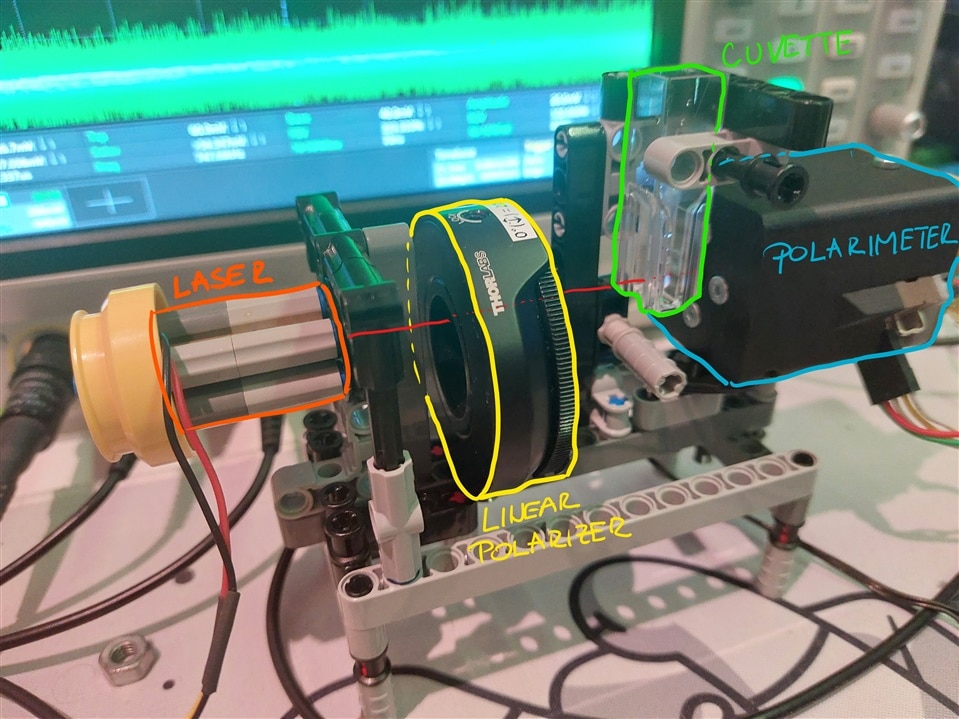 An interesting property of sugar is, that some molecules can polarize light. For example, dextrose causes right-hand circular polarization. This is commonly used to measure the content of sugar. Since we have a device that can measure every possible polarization, we can explore this phenomenon.
An interesting property of sugar is, that some molecules can polarize light. For example, dextrose causes right-hand circular polarization. This is commonly used to measure the content of sugar. Since we have a device that can measure every possible polarization, we can explore this phenomenon.
First I have constructed a simple construct that holds a cuvette, adjustable polarizer and a laser diode. The light from the diode is polarized, after which it passes through a cuvette. Finally, the transmitted light is measured.
First I had to find a reference for the measurement. I did this by filling the cuvette with plain tap water and measuring the light. After that, I emptied the cuvette and refilled it with water with dissolved sugar.
| {gallery}Sugar polarization measurement |
|---|
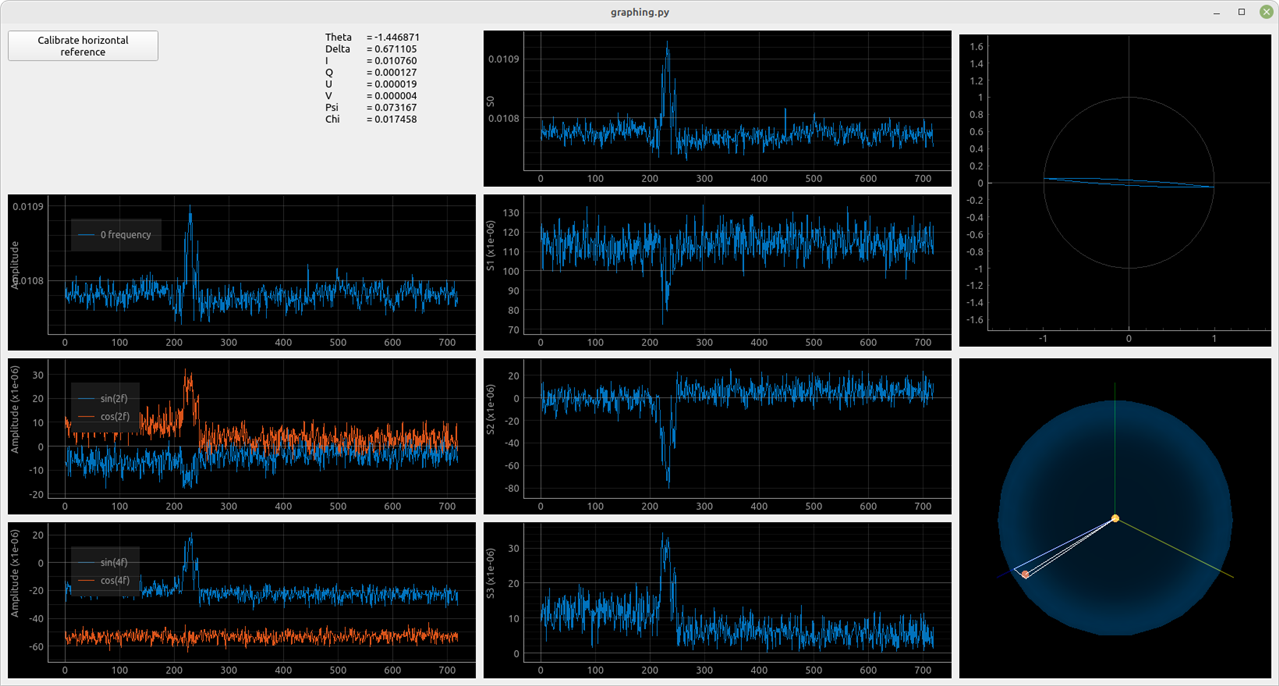
Reference measurement of the water-filled cuvette. Transmitted light has a slightly elliptical polarization, which is probably due to the plastic, from which the cuvette is made. |
|
Measurement of a cuvette filled with water with dissolved sugar. The light is much more elliptically polarized. |
As we can see from the images (the ellipse in the upper right corner), we can see that the sugar caused the polarization of light to become much more elliptical. This is as expected as the ellipticity of transmitted light is proportional to the concentration of sugar.
2. Experiment: Optical fibre and polarization.
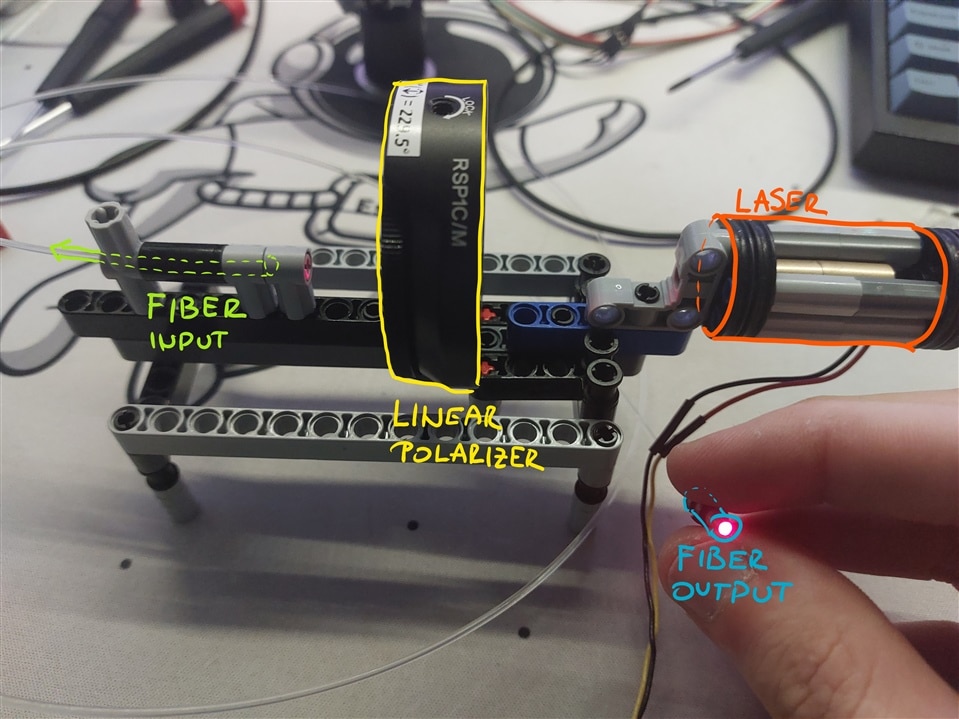
For the second experiment, I wanted to see whether a cheap plastic optical fibre could retain polarization to some degree. For this, I used about 0.5m of 1.6mm diameter plastic fibre. I used a laser which was shining light through an adjustable linear polarizer. The light was then coupled into the fibre. The output side of the fibre was mounted onto a polarimeter. I then spun the polarizer to 180° and observed the results.
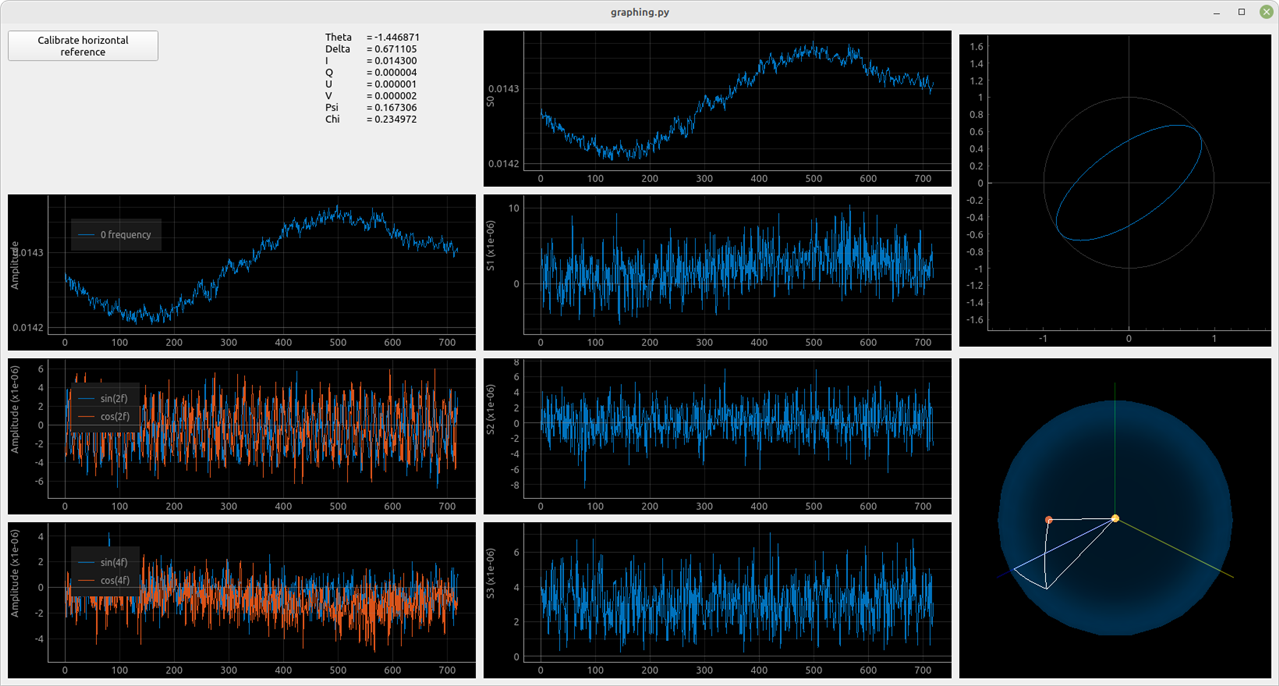
From the image above, we can see that this fibre doesn't preserve any polarization since S1, S2, and S3 (graphs in the middle column) show just the noise (both the ellipse plot and the sphere plot were jumping around due to noise). The intensity is due to the polarization of the laser light.
3. Experiment: Brewsters effect
Lastly, we're going to take a look at how reflection changes the polarization properties of light. The experiment is quite simple. I simply measured the reflected light at different angles. I used a mirror that I had lying around. The laser Light used in the beginning is linearly polarized, yet the angle is not known.
I used the row of Lego bricks in the middle as a scale, for which I then measured the angles Phi.
| {gallery}Brewsters effect experiment |
|---|
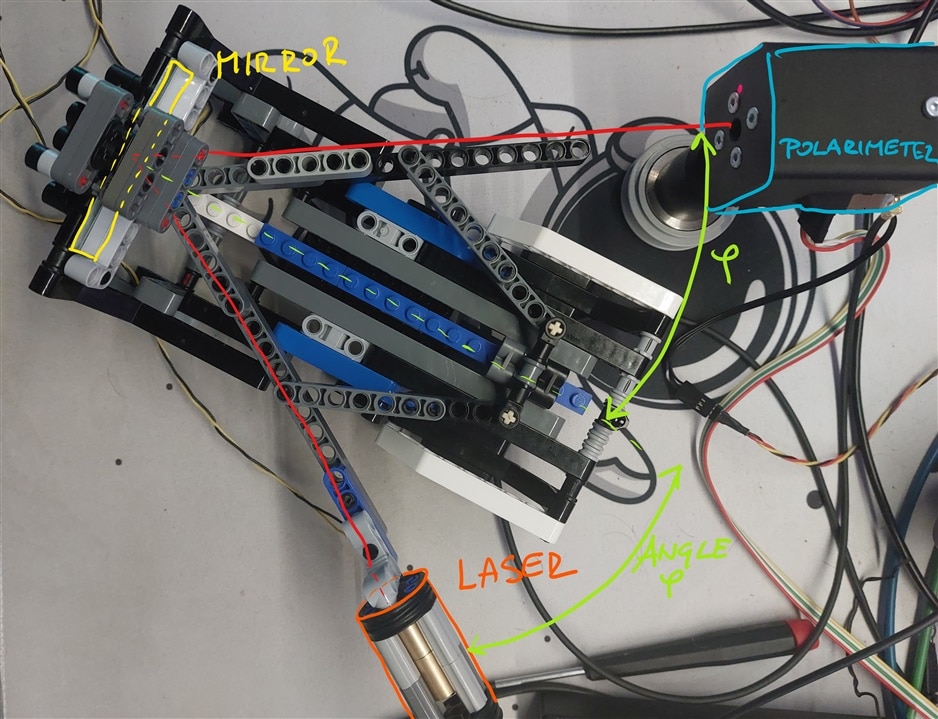
Setup from above (misalignment in the laser spot is due to perspective as well as a slight angle of the assembly) |
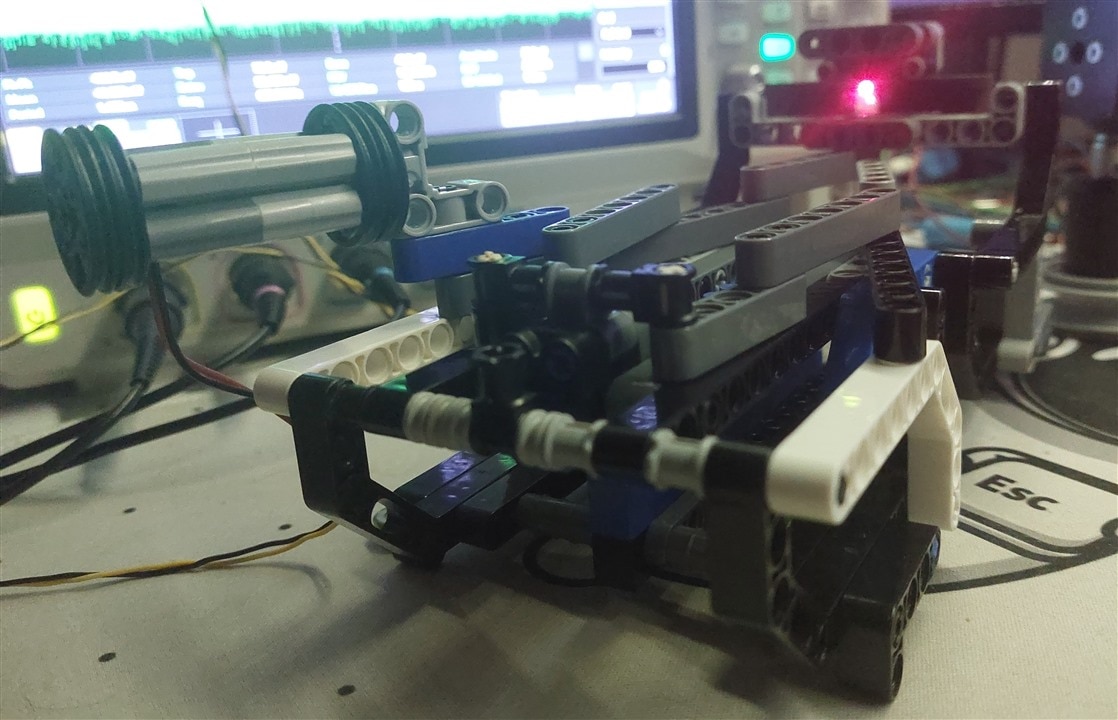 Setup as seen along the optical path of the reflected light. |
| {gallery}Reflection polarization measurements |
|---|
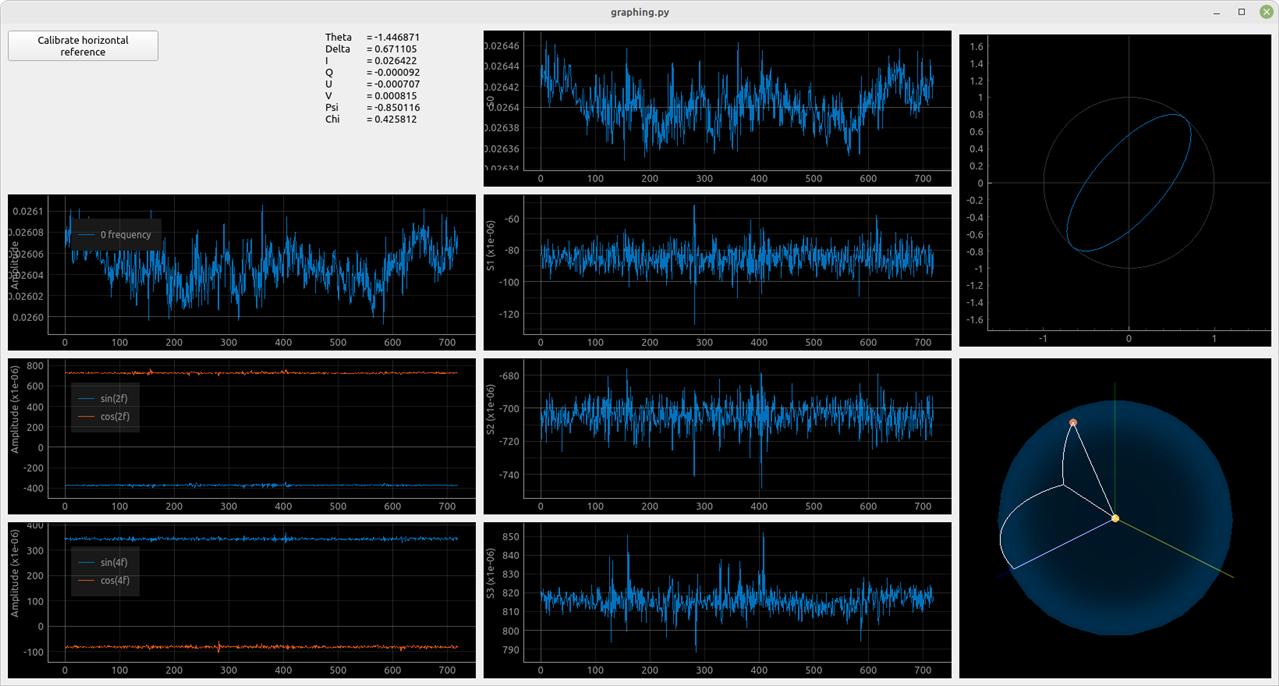
Measurement of reflected light at 63° |
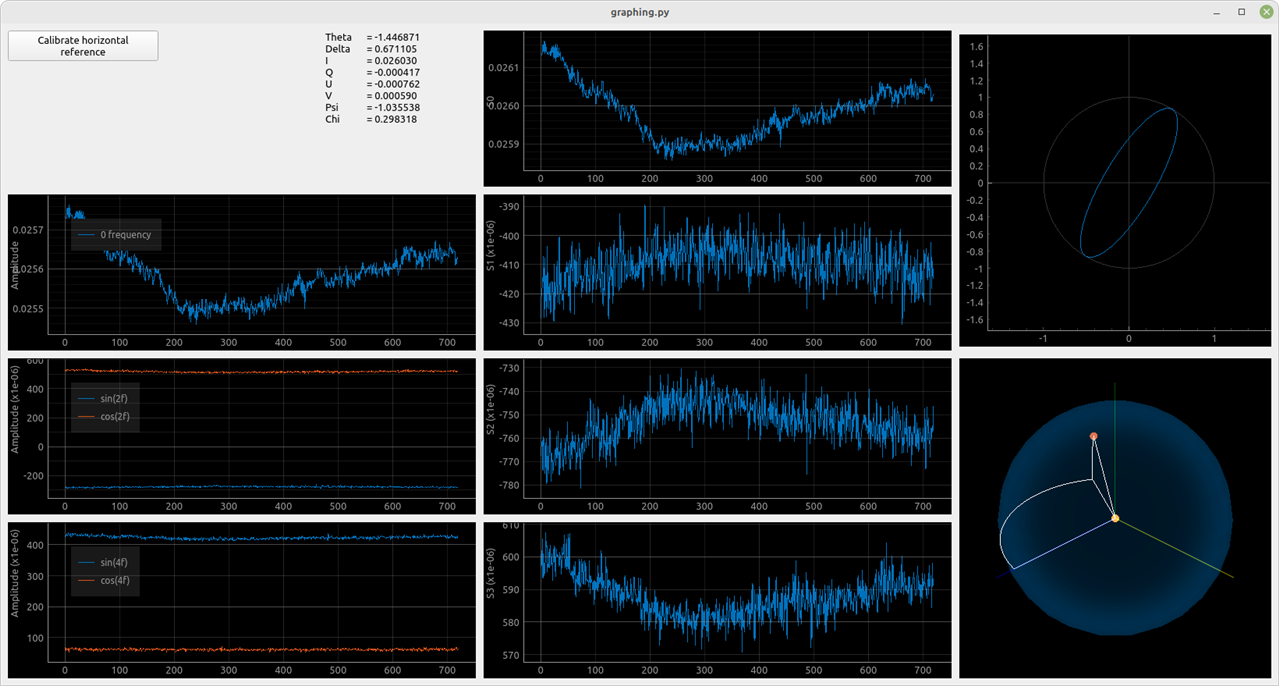
Measurement of reflected light at 54° |
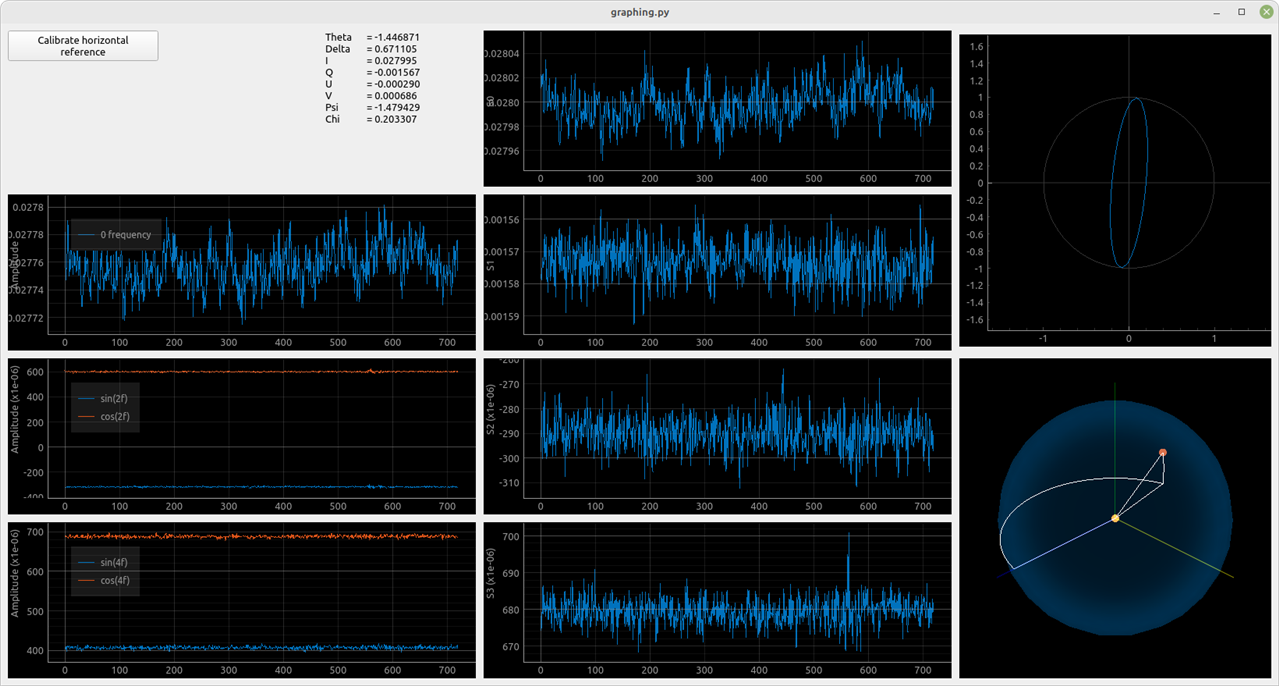
Measurement of reflected light at 45° |
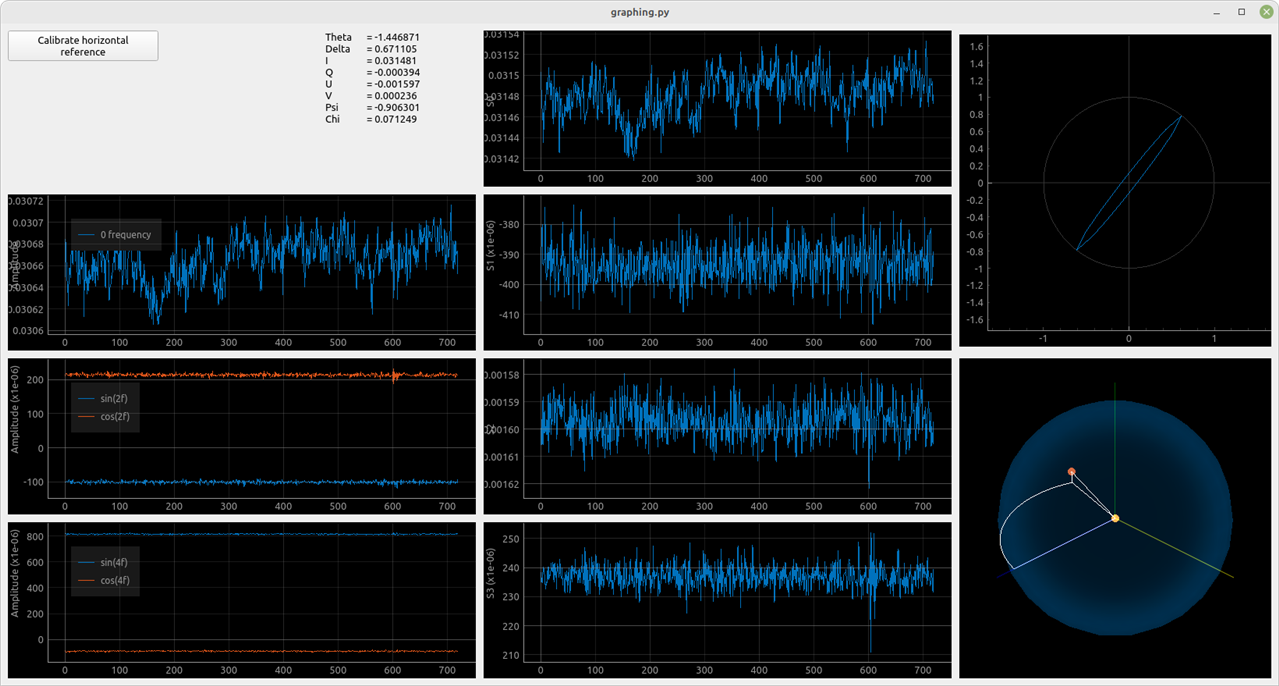
Measurement of reflected light at 35° |
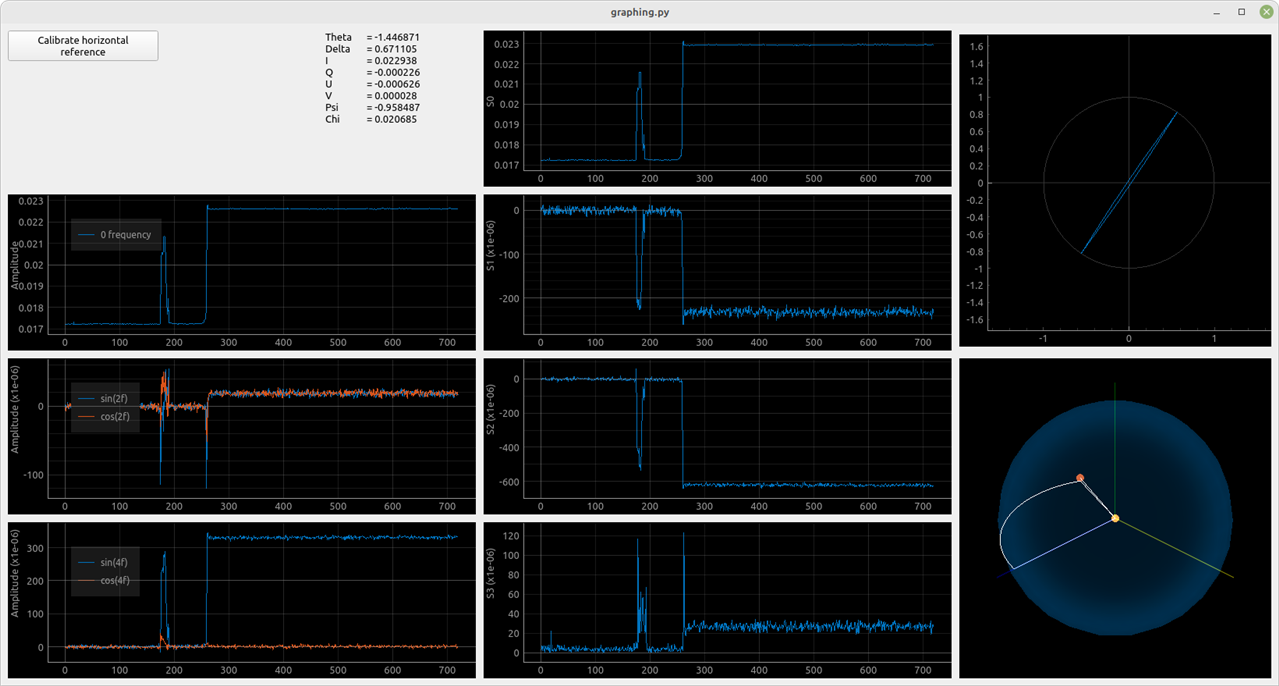
Measurement of reflected light at 20° |
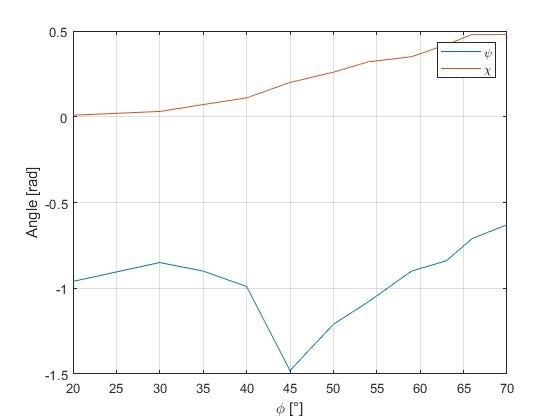
We can see in the images that the light becomes more and more elliptical with increasing angles (look at the ellipse plot in the top right). We can see this better in the following plot.
As we can see from the plot and the screenshot, the polarisation angle (angle Psi) has some angular dependence. This is due to the Brewster effect. Similarly, we can see that Chi has some angular dependence as well. This is because some phase difference between the electric field components is obtained when the light is reflected.
Observed problems
During the experiments I noticed some problems with the device, hence I did not look at all the details with every experiment. All of the experiments were done with extremely weak light since I do not want to damage my ADC (I don't have any spare). Second I have observed that I have a non-negligible amount of noise in DC component measurement. I will have to look at resolving this since it causes issues when working with weak light sources. This prevents causes a few issues when I looking at parameters which are obtained through multiplication or division of the S0 parameter.
Conclusion
Hopefully, I have presented some interesting phenomena in everyday items. I also hope that I have successfully Illustrated the functionality of a polarimeter. If you have any questions or comments I will gladly answer/respond.

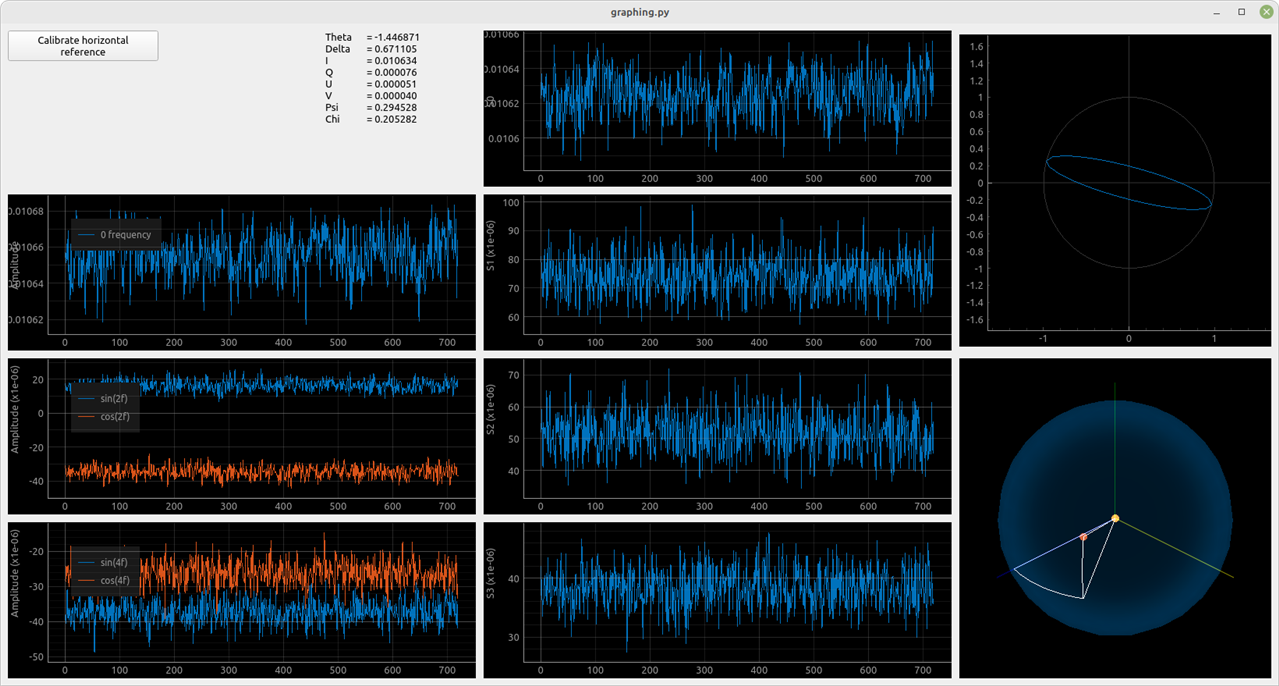
Top Comments
-

javagoza
-
Cancel
-
Vote Up
+1
Vote Down
-
-
Sign in to reply
-
More
-
Cancel
-

jure
in reply to javagoza
-
Cancel
-
Vote Up
+1
Vote Down
-
-
Sign in to reply
-
More
-
Cancel
-

javagoza
in reply to jure
-
Cancel
-
Vote Up
0
Vote Down
-
-
Sign in to reply
-
More
-
Cancel
Comment-

javagoza
in reply to jure
-
Cancel
-
Vote Up
0
Vote Down
-
-
Sign in to reply
-
More
-
Cancel
Children